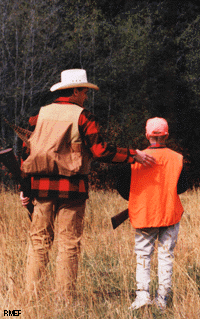|
DIMENSIONS: ecosystem |
Recreation Dimension of Elk Management in YellowstoneRecreational Aspects of Hunting:
Hunting is an important aspect of the recreational activities in the Greater Yellowstone Ecosystem. The Greater Yellowstone Ecosystem has a variety of recreational activities, hunting being high on the list. The Greater Yellowstone Ecosystem includes the areas of the National Elk Refuge, Grand Teton National Park and Jackson Hole. Elk hunting has become an increasing recreation activity in the Yellowstone area.
Hunting has become a more popular form of recreation over the past few decades.
Tourism in Yellowstone with respect
to elk
Recreation is a major part of the Yellowstone National Park area. Recreation can include wildlife (elk) viewing, fishing, hunting (in areas around the national park), camping, canoeing, hiking, etc. Most park visitors come between mid-June and late August. Tourism is the second most important industry in Wyoming and Montana (after agriculture and mineral extraction). In July of 1998 there were 988,509 visitors, and in the following year 1999, there were 974,682. That is a very large number of people going through the park in just one month alone. In a survey taken in Yellowstone National Park, 93% of visitors were there to view wildlife. The estimated numbers of elk on public land for 1999 in Wyoming 38,000, compare that number to 2,250 moose, 542 bear, and 1,136 bighorn sheep. The number of elk is much larger in comparison, increasing the odds for a visitor to see at least on type of wildlife. The number of visitors in Yellowstone National Park was 3,120,830 almost reaching the record-breaking year of 1992 when 3,144,405 visitors came through the park. In the fast paced world that most everyone lives in, people are starting to reach back into the past. The past, in which we could view nature at its best, untouched. People want there children to experience the wonder of wildlife in the wild, elk are the most easily observed wildlife in the park, therefore, elk have an important role with the tourism of Yellowstone National Park.
Links: www.nps.gov/yell/stateofthepark.htm |

